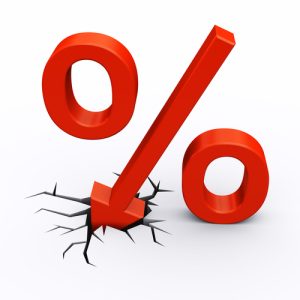Despite reinsurers’ earnings increasing in the second-quarter of 2017 and an improved median combined ratio, on the back of lower catastrophe losses and high reserve releases, year-on-year, Moody’s analysts expect combined returns to decline for its cohort of reinsurance companies for the remainder of 2017.
 For the 12 months ending June 30th, 2017, the median annualised return on equity (ROE) of Moody’s reinsurance cohort increased from 7.8% to 8.1%. During the second-quarter of this year, the group of reinsurers’ total net income also improved, coming in 1.4% higher than a year earlier, while the cohort’s median combined ratio improved to 92.6%, from 95.7% a year earlier.
For the 12 months ending June 30th, 2017, the median annualised return on equity (ROE) of Moody’s reinsurance cohort increased from 7.8% to 8.1%. During the second-quarter of this year, the group of reinsurers’ total net income also improved, coming in 1.4% higher than a year earlier, while the cohort’s median combined ratio improved to 92.6%, from 95.7% a year earlier.
But despite the improvements in Q2 2017 when compared with the same period in 2016, persistent rate declines and the subsequent weak pricing landscape, combined with the impact of hurricane Harvey on companies’ results, has led Moody’s to expect combined returns for its cohort of reinsurers to decline throughout 2017.
Moody’s, says it “expects full year earnings to fall given the cohort’s weaker performance in Q1, and expected losses related to Hurricane Harvey. Furthermore, reinsurance prices are falling for a fifth consecutive year due to excess capital, prompting reinsurers to trim their exposure and cut costs.”
Despite the growth in net income in Q2, around 25% of Moody’s reinsurers’ in question actually reported a fall in earnings when compared with Q2 2016, and this includes European reinsurance giants, Swiss Re and Munich Re.
This highlights just how challenging the global reinsurance market is currently, and while the Moody’s cohort of reinsurers’ Q2 results might well be an improvement on the previous year, a return to more normal catastrophe losses and less of an ability to call on reserves to bolster returns, coupled with weak pricing, is likely to be a real test for the industry for the remainder of this year, and into 2018.
Driven by lower catastrophe losses in Q2 2017 when compared with Q2 2016, which included the huge Fort McMurray, Canada wildfire event, the median combined ratio of the Moody’s cohort improved to 92.6%, with the vast majority of reinsurers recording an underwriting profit.
However, as has been the case for a number of quarters now, Moody’s highlights the lack of losses and strong reserve releases during the quarter as a key reason for sector profitability during this testing time for the market.
“We believe these factors masked the persistent underlying softening of reinsurance prices, which has had the greatest impact on property catastrophe lines, but has also affected most other lines of business,” says Moody’s.
While this message from Moody’s certainly isn’t anything new, it’s a reminder of how challenging the sector is, while events like Harvey serve as a reminder that catastrophe losses will normalise and possibly even go above average at some point, which, with reserves running thin, suggests it might not be too long before some players find themselves in a very, very challenging situation.


